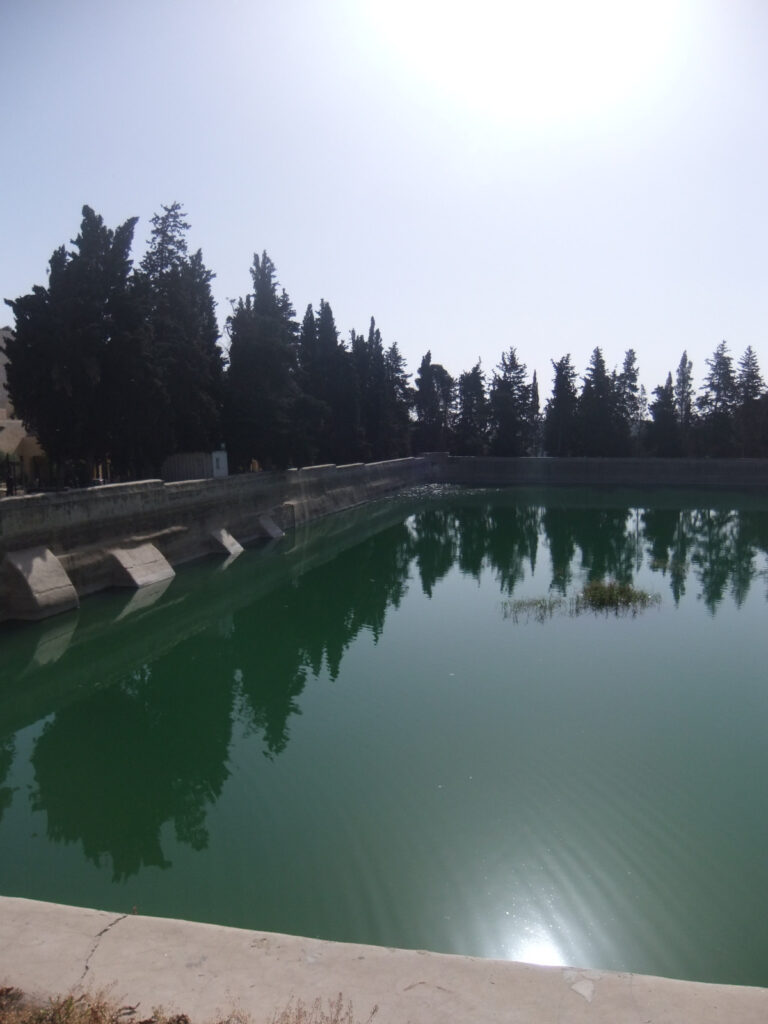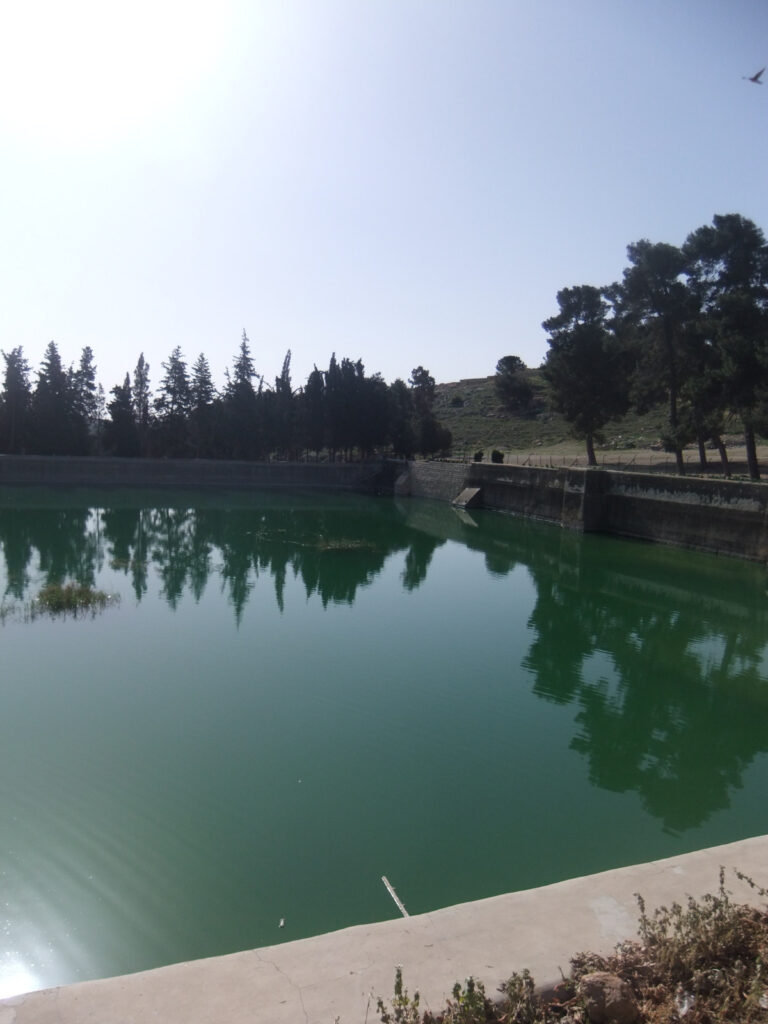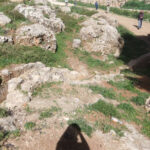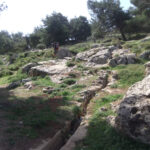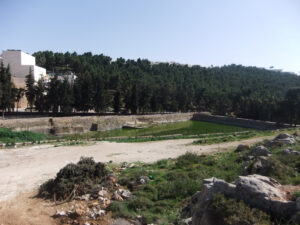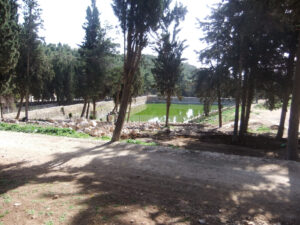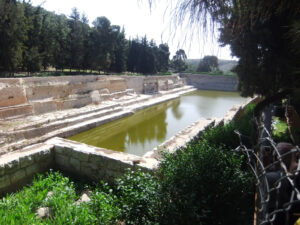Hi,
On the way to Bethlehem, the guided tour Atzva and I took with Amitim Latiyulim, we stopped at Solomon’s pools.
Those are 3 huge pools, built the Hasmonean, Roman or Mamluk time and that collected rain water that supply them to Jerusalem during the Second Temple period.
The pools are in Area A of the west bank, which means we can only see and visit them with a special tour like this one (or, I will be called out for reserve duty around here).
What still amaze me, was the fact that till Israel independence, that water supply system to Jerusalem, which was about 2,000 years old kept on working! An engineering miracle by the Roman engineer.
There were aqueducts built to lead the water: the high level aqueducts and the low level aqueduct. There were blow up by the IDF during the Independence war on 1948 (such a shame, think of the water keep flowing down those tunnels, although Jerusalem need much more water nowadays)
Take Care
Gad
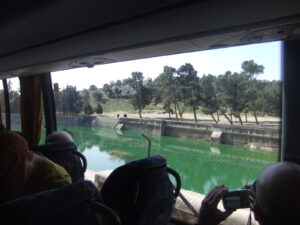 The first pool from the bus window
The first pool from the bus window
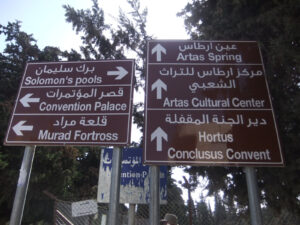 A sign to the locations around the pools
A sign to the locations around the pools
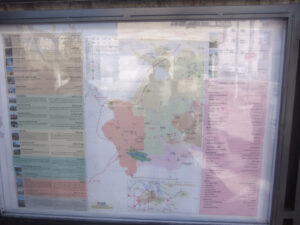 A map of Bethlehem, the pools are the 3 blue squares at the bottom of the map
A map of Bethlehem, the pools are the 3 blue squares at the bottom of the map
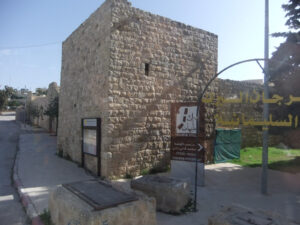 The corner tower of Murad fortress, built on 1617 to protect the water from water traders and local farmers
The corner tower of Murad fortress, built on 1617 to protect the water from water traders and local farmers
The top pool almost to the top
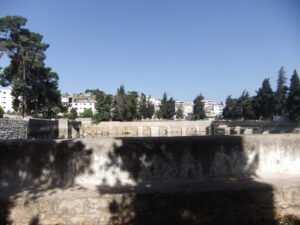 The top pool from the road between them
The top pool from the road between them
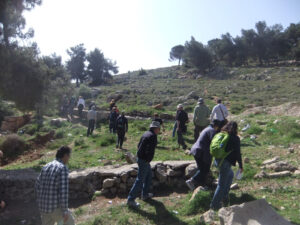 The groups walks along the tunnels which collected the water to the pools (most of the pools water comes from the springs around the pools)
The groups walks along the tunnels which collected the water to the pools (most of the pools water comes from the springs around the pools)
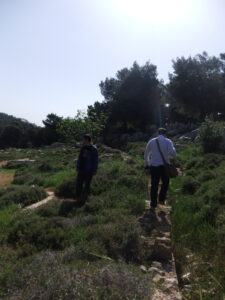 Climbing up a bit for a better view
Climbing up a bit for a better view
More tunnels to collect water
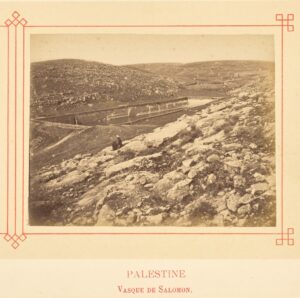 View of Solomon’s Pools and the surrounding hills. A man sits facing the pools on the rocky hills in the foreground (Source: www.getty.edu)
View of Solomon’s Pools and the surrounding hills. A man sits facing the pools on the rocky hills in the foreground (Source: www.getty.edu)
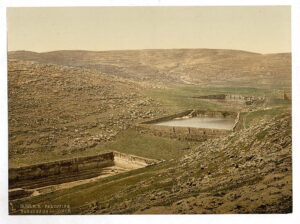 Solomon’s pools circa 1890 (Source: Wikipedia)
Solomon’s pools circa 1890 (Source: Wikipedia)
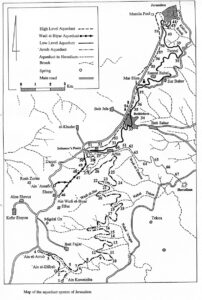 Maps of the aqueducts (Source: romanaqueducts.info)
Maps of the aqueducts (Source: romanaqueducts.info)

